Description and secrets of growing peonies "Command Performance"
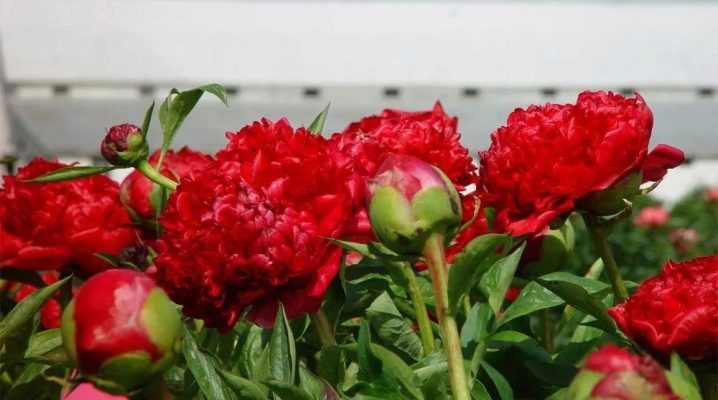
A quiet revolution is taking place in the world of peonies. Breeders create new hybrids that are characterized by abundant flowering and are less susceptible to disease. Peony "Command Performance" has bright attractive foliage, and its rich red flowers will adorn any flower bed.
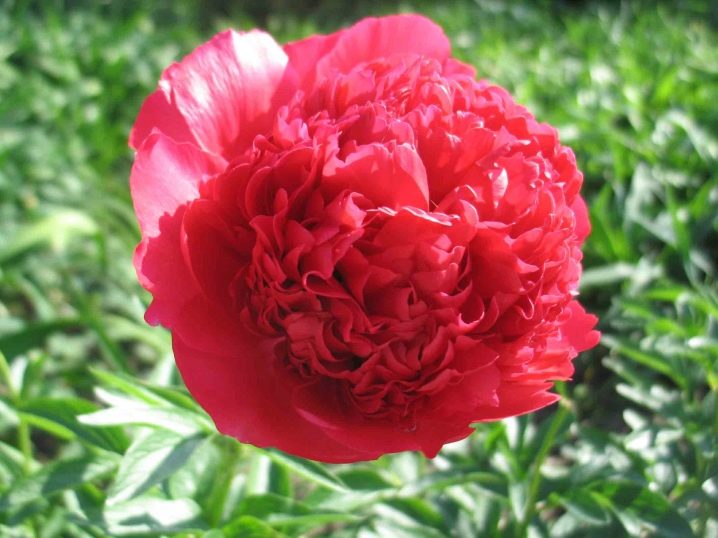
Characteristic
Breeders presented the peony variety "Team Performance" to the public at the end of the 90s. He quickly gained popularity among breeders, as he became one of the best representatives of red hybrids. Since its inception, the flower has won many awards.
According to the detailed description, a dense cap of petals is formed on a strong peduncle, which have a slightly coral shade. The petals are located tightly to each other, slightly dissected at the top. Each inflorescence is neatly collected in a pompom.
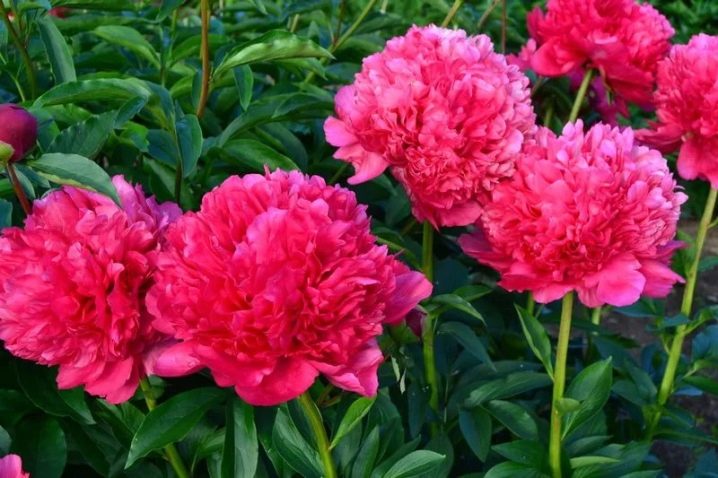
If the bush grows in a sunny place, the flowers may brighten, fading under the influence of ultraviolet radiation. The diameter of each inflorescence is about 250 mm, there are no lateral buds. This is not a hybrid that can please with a bright and rich aroma, but the smell from the flowers still emanates, only very light and subtle.
In the middle lane, flowering begins in mid-summer, in the southern regions of the country earlier - in mid-May.
To prevent the bush from breaking under the weight of large buds, you will need to build supports under the branches.
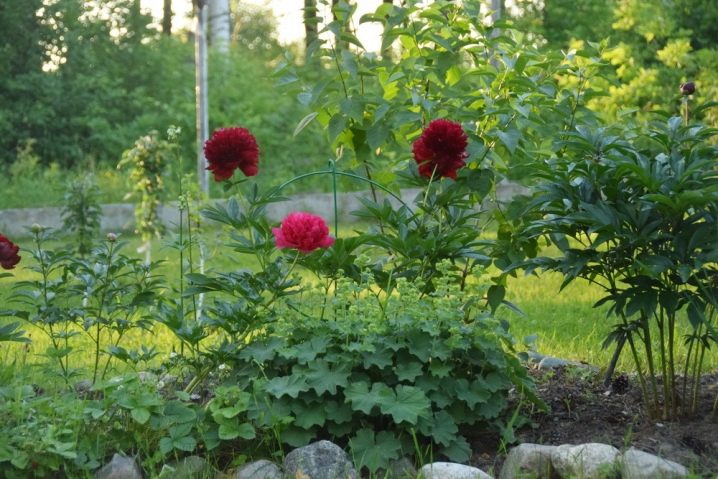
The species under consideration occupies one of the leading places among peonies with large double flowers. The plant can grow up to 800 mm in height. The peony is gaining green mass quickly.
Preparation
The tubers purchased are not ready for planting. Before immersing them in the ground, preparatory work will be required.
- First of all, it is worthwhile to study the roots in more detail. If there are fibrous, damaged ones, then remove them. A sharp clerical knife can be used as a tool, but before that it must be disinfected.
- It is desirable to treat the sections with a solution of one activated carbon tablet. Excess lateral roots will develop and expand laterally, eventually consuming too many nutrients. The star-shaped root pattern for the peony is ideal. The cut is made at an angle of 45 degrees, which prevents the formation of new shoots.
- After pruning and shaping, the tubers are soaked in water for several hours before planting. Can be immersed in water overnight, they will still only absorb the required amount of water. At this stage, prophylactic treatment against fungal infections can be carried out; for this, the tubers are soaked in fungicide for 15 minutes. In addition to the therapeutic effect, the solution gives more strength for new growth.
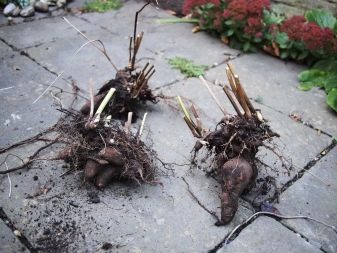

It is worth planting a peony in early September, in which case the best results can be achieved. During the autumn and winter, the plant will have enough time to develop root crops.
Soil type
Peonies prefer well-drained soil that is not overly rich in nutrients. Clay soil works well as it gives the roots a firm footing... Loose sandy soil of these plants is not at all to their liking.
You can add a little sand to the ground if it is too dense and the water stagnates for a long time. In this case, a small amount of drainage layer will help get rid of the problem and keep the root system from rotting.
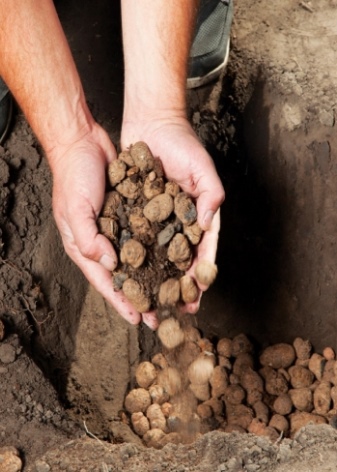
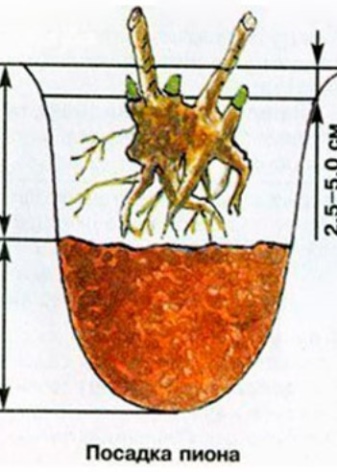
It is important for young plants that the soil is moist, especially in hot and dry weather, but watering should be done at intervals. Fertilizers are not applied for peonies, since they do not require additional feeding for five years after planting. After this time interval, a handful of bone meal in the spring and the same amount of wood ash in the fall is sufficient.
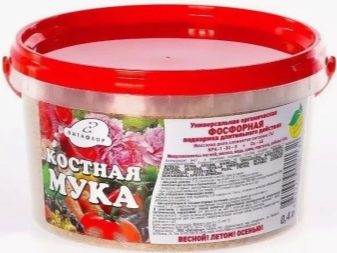
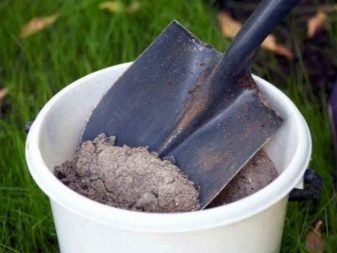
If compost is available, it is the ideal solution. Be sure to add a little agricultural limestone to its composition. This combination is the optimal "diet" for a peony. Better little feeding than too much, as peonies are too susceptible to mineral poisoning.
A little loosening of the soil around will be beneficial, you can lay a small layer of mulch that isolates the soil surface, keeping roots and moisture.
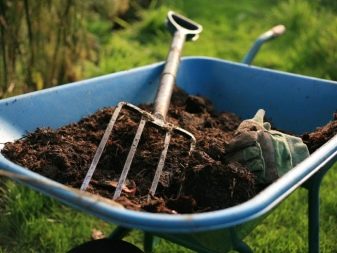
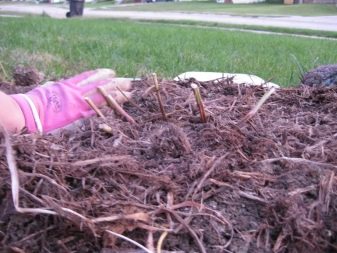
Transfer
Experienced growers are divided on whether to transplant a plant. Some argue that she helps the peony, others say that the flower only suffers from this. Each beginner should act at his own peril and risk, but it is better if the place for the flower is immediately chosen ideally.
Moving is stress, after it it is difficult for the peony to recover, the flowering is sluggish, the foliage is dull and lifeless.
Even if a transplant is necessary, it is worth digging up the peony so as to pick up the entire root system along with the soil. Thus, fewer shoots are injured. The time for transplanting is the beginning of autumn, when the flowering period is already over, or from October to March.
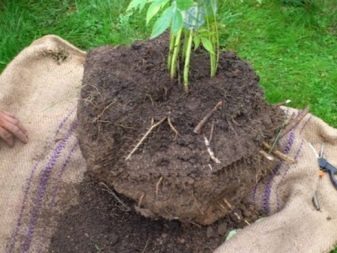

The ideal place is partial shade, a few meters from shrubs and trees, where the peony can grow and develop normally. If several plants are transplanted at once, then they should stand at a distance of a meter from each other.
With an insufficient amount of free space, the peony becomes unattractive, its branches stretch too much, since there is not enough sunlight.
There are no special requirements for planting and growing peonies, they are unpretentious, but, like any plant, they require attention, timely watering, and proper selection of a place. If at the first stage everything is done correctly, then there will be no hassle, especially since peonies are resistant to diseases and pests.
See the video below about the peculiarities of growing peonies "Command Performance".







































































































The comment was sent successfully.